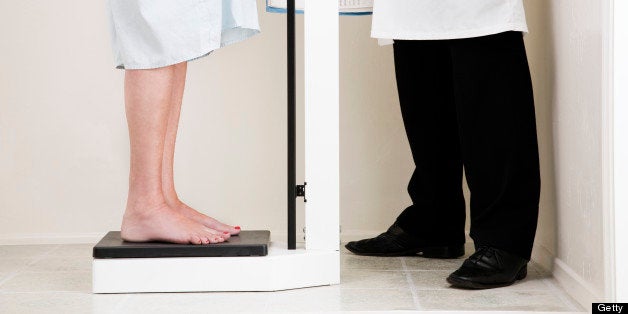
By: Christopher Wanjek, Bad Medicine Columnist
Published: 07/09/2013 10:05 AM EDT on LiveScience
Why doesn't America invest more in disease prevention than in postdisease treatments, when the former is well-known to be a better way to save lives and money?
Cynical people might chalk it up to a conspiracy among the food and pharmaceutical industries to keep us sick and medicated. But in a recent article, Harvey Fineberg, president of the U.S. Institute of Medicine, identified perhaps more viable reasons, among them the fact that the success of disease prevention is invisible and, in short, lacks drama.
Thus, it is difficult to sell prevention to the public and their representatives in Congress.
In his article, published in the current issue of the Journal of the American Medical Association, Fineberg provides six solutions to overcome what he called the "paradox of disease prevention," celebrated in principle but resisted in practice. His solutions include making prevention more profitable for doctors and the employers, and also "cheaper than free" for low-income families.
There was a time when disease prevention was the core element of health practice. Fineberg, who was the dean of Harvard School of Public Health from 1984 through 1997, noted some of the greatest advancements in human health: clean water, sanitation, the fortification of food with vitamins and vaccination. Wide access to these advancements increased human life expectancy by 25 years over the course of the 20th century.
Similarly, medical researchers know that people who improve their diet, exercise regularly, and refrain from smoking are at much lower risk for most chronic diseases that plague the U.S. population, such as obesity, Type 2 diabetes, circulatory disease, liver disease, kidney disease and many forms of cancer. Yet these forms of prevention are not commonly practiced. Why?
Fineberg said great improvements in public health in the past were highly visible. In the mid-1800s, implementing disease prevention was possible because the results were obvious: clean water and trash removal immediately and dramatically reduced sickness and deaths. Things smelled better, too.
Similarly, at the dawn of the 20th century, when 1 in 10 U.S. children died before their first birthday, "the threat of infectious diseases was palpably evident," Fineberg told LiveScience. Childhood vaccines clearly saved lives, and vitamin-fortified foods clearly eliminated diseases with names people today hardly recognize, such as beriberi, pellagra and rickets.
By contrast, today these threats are largely behind us (although vaccine aversion has contributed to a resurgence in pertussis, measles and other potentially deadly diseases), and people see less need for disease prevention. The benefits of eating healthfully, exercising and quitting smoking might not pay off for decades. [5 Bad Habits You Should Still Quit ]
Fineberg listed several other examples of why prevention is harder to implement today. For example, it's more dramatic to cure cancer than to prevent it with, say, the HPV vaccine, which protects against the virus that causes cervical and other cancers.
Cures make the headlines; preventatives don't. Also, risky behaviors such as speeding or carrying guns is often tolerated. Although there are signs of change, society is not so aghast of reckless driving or gun use to usher in radical change.
Yet change is possible, Fineberg said.
"Some countries have done an excellent job with preventive strategies," Fineberg said. "Finland dramatically reduced its burden of cardiac disease, once one of the highest in the world, through a concerted program focused on the major cardiac risk factors. Sweden has adopted the goal of "Zero Fatalities" from automobile travel. Mexico introduced payments to families on welfare to reinforce good preventive practices [such as] immunization [and] nutrition."
These positive examples play into Fineberg's six solutions to bring disease prevention to the forefront. Other ideas include involving employers to promote health in the workplace and to provide incentives to employees to maintain healthy practices; using policy to reinforce choices that favor disease prevention, such as smoking or trans-fat bans; and embedding prevention in popular culture, for example, as the Centers for Disease Control and Prevention did in 2011 when it issued a graphic novella about a zombie invasion to inform the public about pandemic preparedness.
New York's smoking ban in public places and Chicago's attempt to get to zero traffic fatalities are steps in the right direction, according to Fineberg. "You do not need to look abroad to find strong models for preventive strategies," he said.
Just don't expect an "ER"-type television drama with young, sexy doctors and nurses debating the merits of a plant-based diet with an obese patient. Defibrillators and emergency bypass surgery to remove a life-threatening arterial blockage make for better TV, at a cost of promoting bad health policy.
Christopher Wanjek is the author of the books "Bad Medicine" and "Food At Work." His column, Bad Medicine, appears regularly on LiveScience.
